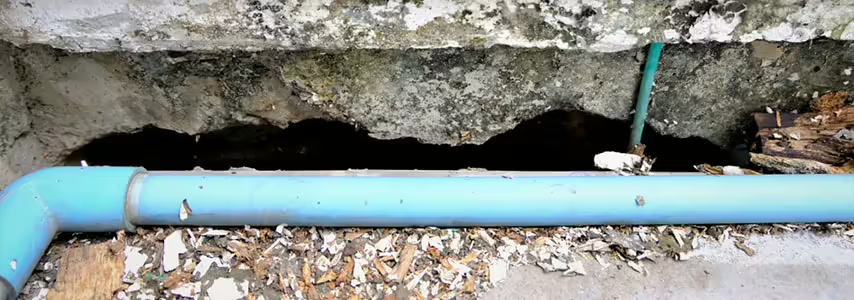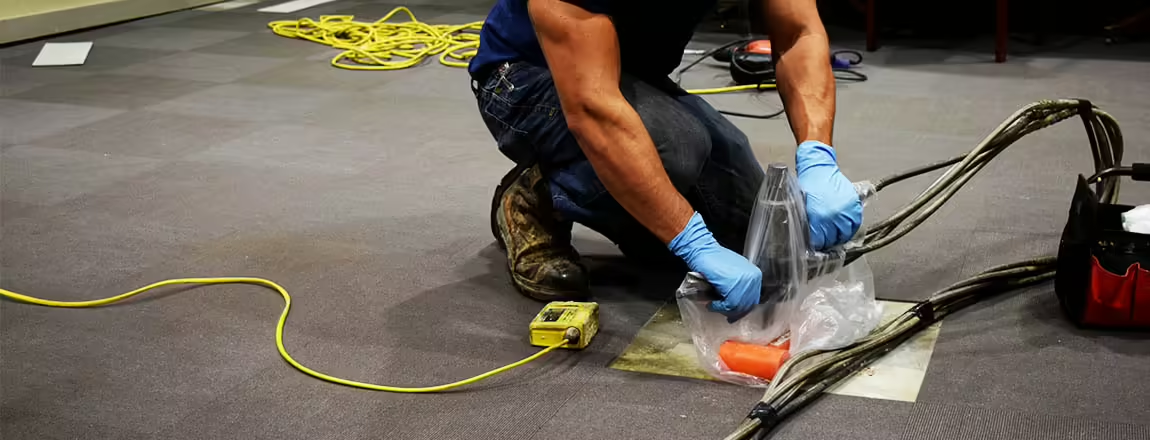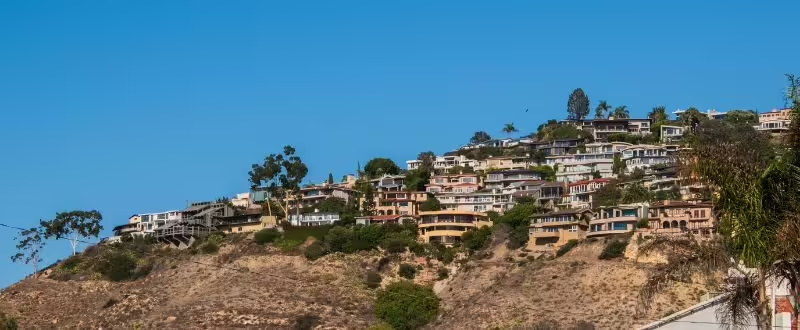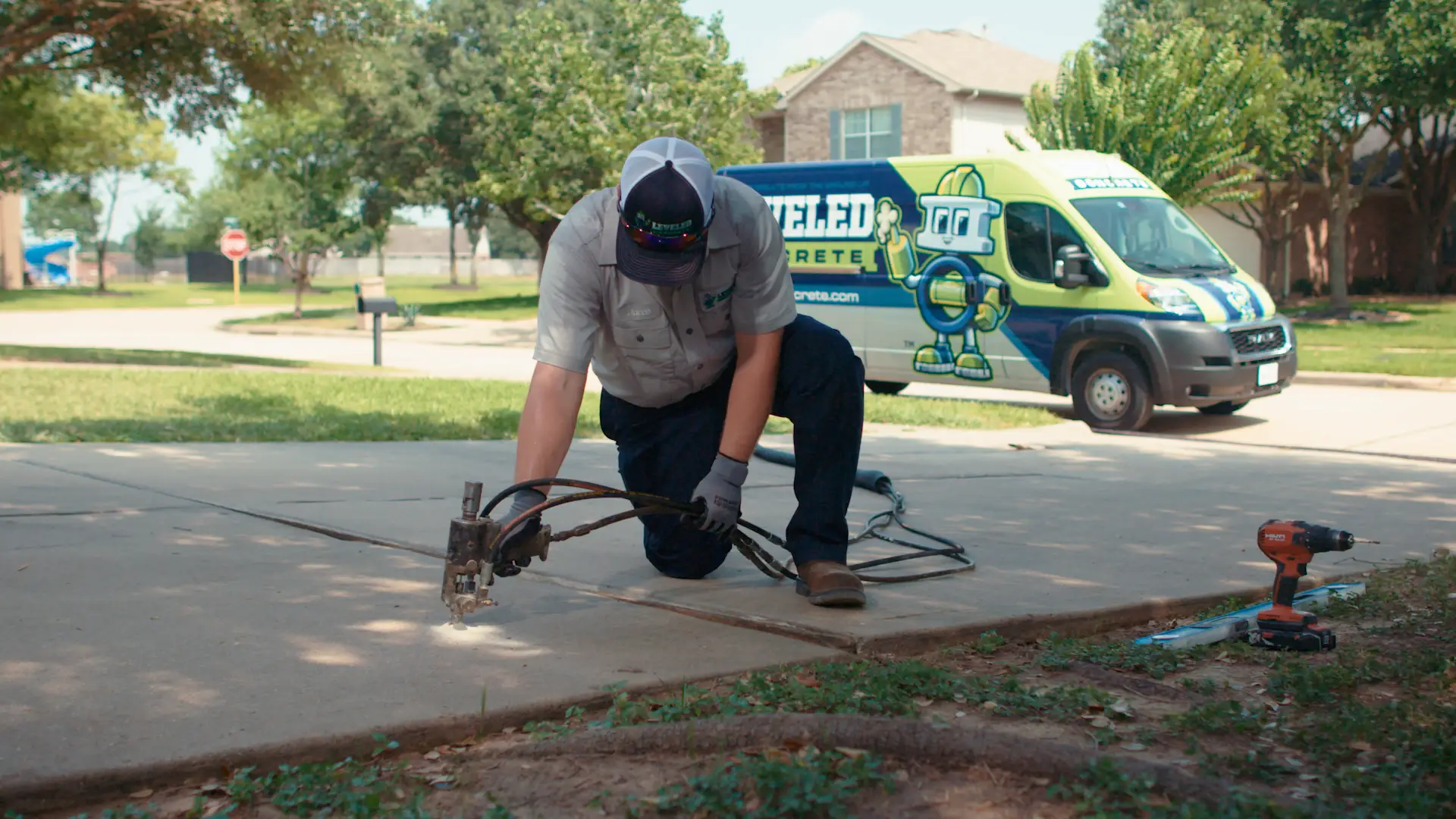Soil stabilization improves soil strength and helps support structures built on it. It increases the ground’s ability to carry weight, resists water damage, and reduces erosion. These methods are used in both construction and agriculture to prevent shifting and structural issues.
What is soil stabilization?
Soil stabilization is the process of improving unstable ground through various techniques: mechanical, chemical, or foam-based.
What Unstable Soil Does to Your Property
Unstable soil doesn’t have the strength to support structures. It may shift, sink, or expand depending on moisture, compaction, or organic content. Sandy soil doesn’t hold together because the soil particles are large and loose. Clay soil has smaller, dense particles that expand and contract with moisture. Both can lead to foundation damage, poor drainage, or structural shifting.
Soil stabilization changes how foundation soil behaves. It improves how well the ground holds together and how much weight it can carry. It also reduces how much the soil moves with changes in moisture. This helps prevent foundation issues, erosion, and other costly problems.

Types of Soil Stabilization Techniques
There are several ways to stabilize soil depending on site conditions, soil type, and what kind of structure will sit on top. The most common soil stabilization methods include:
- Mechanical Stabilization improves soil by compacting, mixing, or reshaping it using machinery.
- Chemical Stabilization adds materials like lime, cement, or fly ash to alter soil behavior.
- Polyurethane Foam Injection is a non-invasive method that uses expanding foam to fill voids and support weak subgrades.
Mechanical Stabilization
Mechanical stabilization is one of the oldest soil stabilization techniques. It means physically mixing, compacting, or blending soils to improve strength. It’s common in roadwork, pads, and foundation prep.
Crews use compactors, bulldozers, and graders to shape and pack the soil. This method is still used for foundation soil stabilization where chemical-free solutions are needed.
Pros:
- No chemicals or additives
- Permanent if done well
Cons:
- Needs large equipment
- Labor-heavy and slow
Chemical Stabilization
Chemical stabilization uses additives to change how the soil behaves. Lime soil stabilization and cement soil stabilization are two of the most common methods. These additives help bind loose soil and limit how much water it can absorb.
Other materials include fly ash, polymers, and emulsions. These chemical blends bond with soil particles and are compacted into the ground to create a stabilized subgrade, especially effective in granular soils like sand and gravel.
Best for:
- Clay-rich or silty soil
- Roads, pads, and areas needing extra strength
Used in:
- Ground stabilization for new builds
- Concrete soil stabilization under slabs and paving
Polyurethane Foam Injection
Polyurethane foam injection is a type of soil stabilization injection that strengthens weak ground without digging. This soil injection stabilization process uses expanding foam to fill voids, displace water, and compact the soil.
At Leveled Concrete, we use this method for foundation soil stabilization. Our patented PolyRenewal™ technique is designed for residential and commercial jobs.
Good for:
- Loose fill or soft soils
- Building foundations, slabs, driveways, and warehouse floors
Benefits:
- No excavation needed
- Fast, clean, and long-lasting
- Ideal for hard-to-access areas

How Soil Type Affects Foundation Stability
The right soil stabilization method depends on what kind of soil you’re working with. Soil type affects drainage, strength, and how the ground shifts over time. Knowing how to stabilize soil depends on these factors.
Clay Soil
Common in Houston. Clay holds water and swells when wet. It shrinks and cracks when dry. This movement breaks concrete and shifts slabs. Clay soil stabilization is often done with lime, cement, or foam injections.
Loamy Soil
A mix of sand, silt, and clay. Loamy soil drains well and holds nutrients. It’s good for landscaping and gardening. In construction, it still needs compaction to prevent shifting.
Sandy Soil
Drains quickly but doesn’t hold nutrients or moisture. Sandy soil is loose and low in strength. Adding organic material, chemical stabilizers, or foam can reduce soil erosion and improve stability.
Signs You May Need Soil Stabilization
Not sure if your property needs soil stabilization? Watch for these warning signs:
- Structural cracks in your foundation, driveway, or sidewalks
- Sloping or uneven floors
- Pooling water near the base of your home or structure
- Doors and windows sticking or misaligned
- Repeated plumbing issues due to shifting pipes
Call Leveled Concrete for Soil Stabilization Services
Unstable soil leads to foundation cracks, sinking slabs, and plumbing issues. Common causes include dry weather, underground voids, and poor backfill. If left untreated, the damage spreads.
Leveled Concrete provides professional foundation repair services using advanced polyurethane foam. Our PolyRenewal™ method is trusted by soil stabilization contractors across the Houston area.


